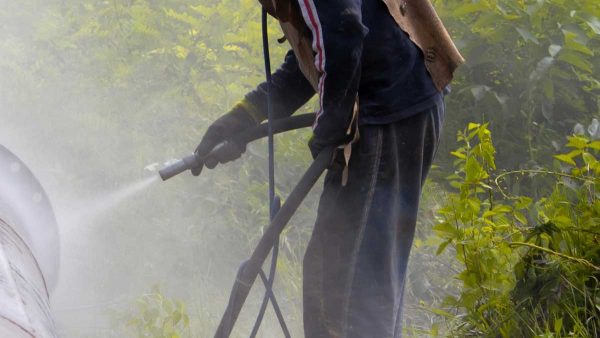How sandblasting works

You might have heard of sandblasting. But chances are you don’t know as much as you think you do about it unless you work with it on a regular basis.
At its core, sandblasting is simply using air to propel a high-speed jet of abrasive material at a surface. It’s used to clean and abrade surfaces, to remove imperfections and scrub away stains where chemicals could cause damage.
Sandblasting: more than just sand
“Sandblasting” is something of a catchall term, but it doesn’t actually have to involve sand. There are many different types of abrasive that can be sprayed through a sandblasting rig. These include crushed walnut shells, baking soda, powdered steel, glass beads, crushed garnet or even dry ice.
It’s usually done dry but can also be done wet with a different blasting rig.
When you hire a sandblasting crew, the first thing they’ll usually do is figure out what surfaces you’re wanting cleaned. That will help them figure out what kind of grit to use. Many building applications (particularly masonry applications like graffiti cleaning) require a softer material like crushed walnut shells or corncobs as a medium. Heavier types of sandblasting can remove material from the underlying wall and cause damage to the building envelope.
Sandblasting applications for your building
Sandblasting has a variety of commercial uses including polishing and etching, but for most people it’s used as a cleaning tool. It’s an incredibly quick method of cleanup and abrasion, far quicker than hand tools or even most smaller abrasive methods.
It can be used to clean away graffiti, moss and surface stains on concrete, masonry and steel. That’s the primary use most building owners want.
But it’s also a necessary step for preparing a surface for painting or protective coatings. It can remove traces of other material and make sure that the coating will actually stick the way it’s supposed to.
Toxic chemicals are a regular choice for cleaning buildings, but if you’re concerned about environmental impact sandblasting is an excellent replacement. It’s harmless and non-toxic in almost all applications.
Sandblasting is a great choice for your building cleaning or surface preparation needs. But it requires an expert to do it correctly. You can permanently damage surfaces if you’re not careful and don’t know what you’re doing. Call JK Industries today and let our experts help you restore your building to its best state.
